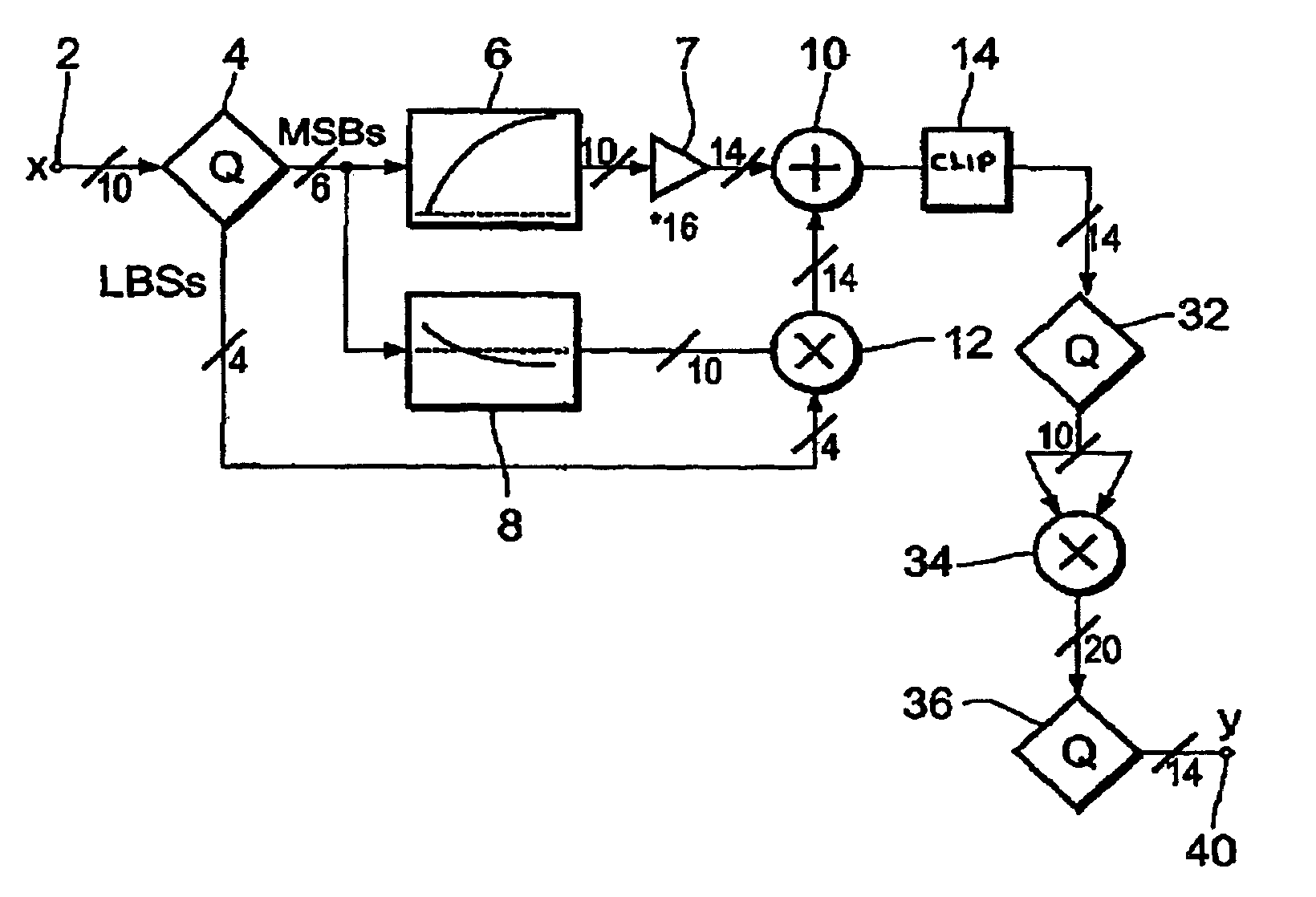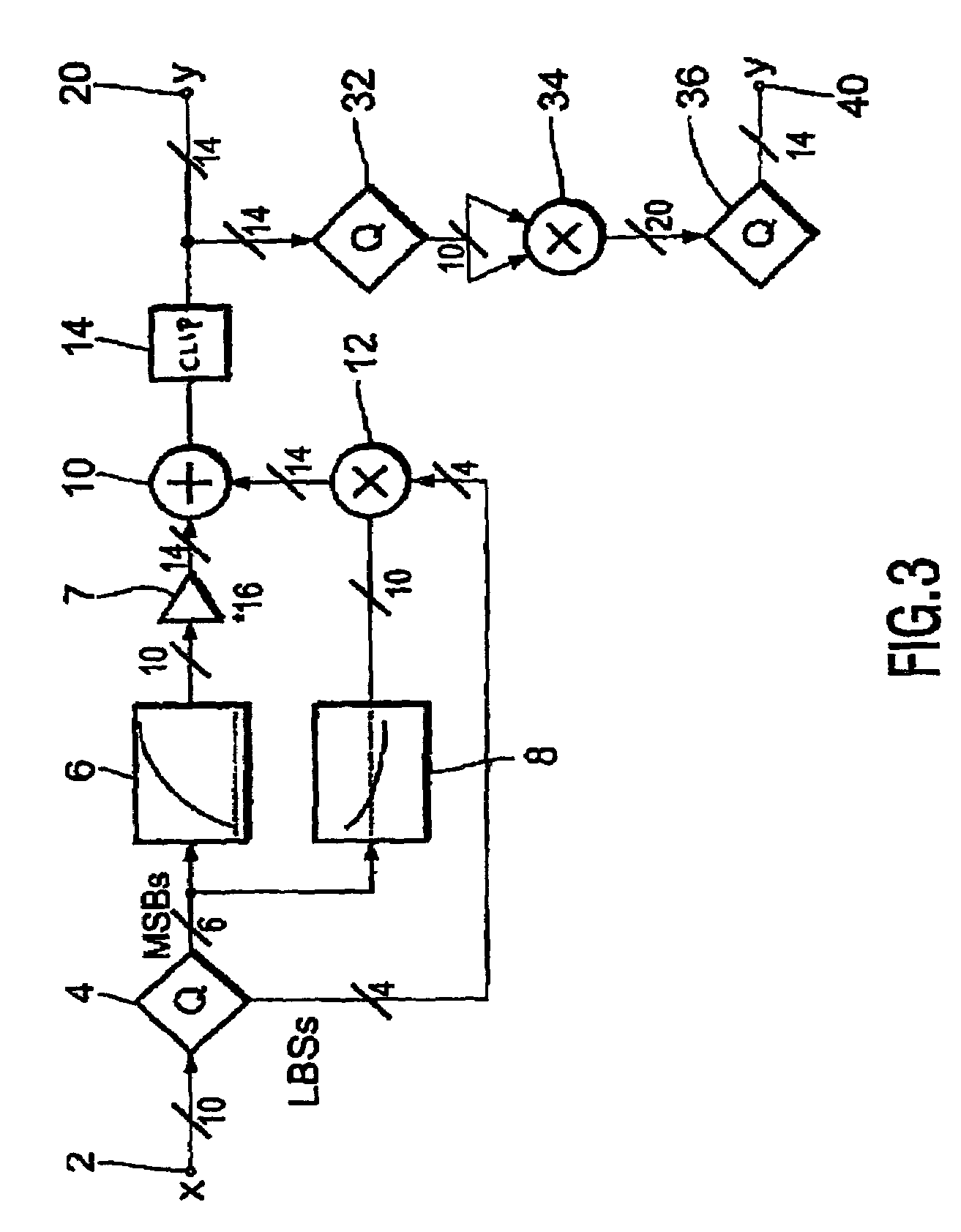Gamma correction circuit
a correction circuit and gamma technology, applied in the field of gamma correction circuits, can solve the problems of severe quantization errors, approximation errors, etc., and achieve the effects of reducing the average quantization error, improving the smoothness of output signals, and reducing quantization errors
- Summary
- Abstract
- Description
- Claims
- Application Information
AI Technical Summary
Benefits of technology
Problems solved by technology
Method used
Image
Examples
Embodiment Construction
[0026]FIGS. 1, 2 and 3 show three different embodiments of a gamma correction circuit according to the invention, all three embodiments include however, the same basis design. The circuit includes a first lookup table 6 for storing discrete output intensity data of a non-linear transfer function, and it includes a second lookup table 8 for storing the slope data of the non-linear transfer function, associated to the respective output intensity data stored in the first lookup table. The respective output intensity data and the associated slope data are stored in the first and second lookup table 6, 8 under the same address, this address being defined by the corresponding input video signal intensities of the input signal.
[0027]The output of the first lookup table is connected via shifting unit 7, the operation of which will be described later, to the first input of an adder 10. The output of the second lookup table 8 is connected to a first input of a multiplier 12, the output of whi...
PUM
 Login to View More
Login to View More Abstract
Description
Claims
Application Information
 Login to View More
Login to View More - R&D
- Intellectual Property
- Life Sciences
- Materials
- Tech Scout
- Unparalleled Data Quality
- Higher Quality Content
- 60% Fewer Hallucinations
Browse by: Latest US Patents, China's latest patents, Technical Efficacy Thesaurus, Application Domain, Technology Topic, Popular Technical Reports.
© 2025 PatSnap. All rights reserved.Legal|Privacy policy|Modern Slavery Act Transparency Statement|Sitemap|About US| Contact US: help@patsnap.com



